How to create a more seamless ASC patient experience
What can ASC leaders do to improve their patient billing experience? Start by taking these steps:
- Engage stakeholders. All members of an ASC’s staff should understand the importance of collections, how the process impacts patients and a surgery center's viability, and how staff can be supportive. Emphasize these points with stakeholders across the center and educate them about how to empathize with patients and where to direct patients when they have questions or concerns about their financial responsibility.
- Provide upfront cost estimates. As soon as a patient has their procedure scheduled, begin determining the estimated cost of the surgery and share this estimate with the patient. Explain, in clear terms, what this estimate means for them, and emphasize that it is an estimate. This is a good way to set expectations, answer questions, or address concerns early.
- Offer— and explain — multiple payment options. Patients want payment options, and in some cases, they may need them. Depending on the demographic, such as age, patients may prefer certain types of payment, like online transactions, mobile wallet payments, or cash. Patients may also want or need to pay in installments. As such, make an effort to provide diverse payment options and different types of ASC payment plans to suit patient preferences, and make sure staff can explain these options clearly and concisely.
- Verify insurance eligibility ASAP. Insurance can dramatically impact the financial responsibility of the patient, so it’s critical to verify insurance eligibility as early as possible. Check the patient’s coverage limits, deductibles, authorization requirements, and any other relevant information. Then, follow up with the patient to explain what their insurance covers, why, and what costs will be their responsibility. Verify insurance again as the procedure date approaches to account for any changes that may have occurred between scheduling and surgery.
- Collect upfront payment. ASCs should strive to collect copays, deductibles, and coinsurance upfront based on the estimated patient responsibility, or at minimum, set patients up on a payment plan that begins immediately after the procedure. Proactive collections help surgery centers secure patient payments early and reduce the risk of unpaid balances.
- Establish follow-up processes. Once you’ve verified charges and submitted the claim to the patient's insurance(s), it’s time to begin follow-up with the patient to collect any balance. Contact patients via their preferred method of communication or send automatic reminders to help encourage payment. Sometimes, all a patient needs is a gentle nudge to submit payment, but you should have processes in place that staff can follow if they are not receive a response to ensure your ASC gets paid.
- Measure performance for continuous improvement. The billing process requires frequent refinement to optimize the experience. To understand where and how to improve, create benchmarks and key performance indicators related to collections. Track and monitor these metrics to identify bottlenecks or areas of improvement and create takeaways and actionable next steps to learn from these challenges. You can also send feedback forms or surveys to patients to understand how they felt about the experience.
Following these best practices can help you build a more seamless payment experience for patients, improve ASC patient satisfaction, and strengthen collections.
Strategies for simplifying complicated bills
Ambulatory surgical billing can be complicated, making it difficult for the layperson to understand exactly what they’re paying for and why. When patients can’t fully comprehend the payment breakdown, it can negatively impact the ASC patient experience. To ensure ASC patient satisfaction with the financial component of their care, surgery centers can employ different strategies to help simplify complicated billing.
For example, focus on using uncomplicated language and short sentences. Avoid medical jargon, and when it’s unavoidable, provide a clear explanation of the terminology. Insurance jargon can also cause confusion — patients may not understand what a deductible is or why their insurance won’t cover more than expected. Explaining common terms can help patients better understand what’s their responsibility and why.
The same goes for payment plans. The options you offer should use easy-to-understand language that’s clear and concise. Payment due dates and amounts should be highlighted. Patients should fully understand what they’re signing up for when they choose a plan. Consider using visual charts to convey options instead of blocks of text that may intimidate or confuse patients.
In addition, break down charges whenever possible to help patients understand what they’re being charged for. For example, create bills with itemized charges, detailed explanations of procedures, and color-coded labels for insurance discounts or adjustments. This can defuse confusion and prevent patients from becoming frustrated when they see an expectedly high cost.
Patients shouldn’t feel blindsided by their bill. Simplifying bills can help avoid this situation and reduce stress, which can improve the ASC patient experience. Always aim to provide clear, thoughtful guidance to patients and make billing as transparent as possible.
5 ways ASCs can better support patients
You can also help patients find the answers they need to financial questions by providing a few resources throughout their care journey, including:
- Patient technology. ASC software solutions can provide a variety of patient engagement features to enhance communication. For example, a secure patient portal gives patients a single place where they can complete pre-surgical questionnaires, review instructions and other pertinent information, pay bills, and receive notifications, reminders, and billing updates on their preferred devices. A portal also makes it easier to reach patients, so staff can spend less time chasing patients to complete their responsibilities, including those concerning payment.
- FAQ document. Does your staff field the same questions over and over? Keep track of these questions, document clear and precise answers, and compile them on a frequently asked questions (FAQ) page. This FAQ page should be easy to find and access on your website or in your patient portal, so patients can find answers on their own. This resource can save your staff time and equip your patients with the knowledge they need to come better prepared and understand their financial responsibilities before and after surgery.
- Support hotlines. When patients can’t find the information they need on an FAQ page or want a faster answer, they should be able to contact your facility with ease. Provide patients with a support hotline they can call, text, or reach in another fashion, and simplify the process as much as possible. Patients should be able to find the hotline contact information, including available hours, on your website or in your patient portal. Wait times should be kept low, service options should be clear, and navigating any menus should be simple.
- Well-trained staff. Patients will look to your staff for support throughout their care journey, including with financial responsibilities, so it’s essential that all team members are prepared to serve as a trusted resource. Staff need to be personable, empathetic, and knowledgeable. Conduct training to help staff understand this as well as how to handle various — and potentially difficult — situations. Create scripts and use roleplay to run through challenging scenarios, like financial responsibility conflicts. Advise team members to keep language simple, avoiding medical jargon, and prepare them to answer any question or know where to find answers. Staff should understand every patient is different and may have a unique reaction to financial challenges, such as embarrassment, anger, or shock.
- Patient education materials. Patients may consume information in different ways. While some may find online FAQs useful, others may want to receive information in the mail. To cover your bases, build a resource base of educational materials that covers all types of learning, from visual to audio and beyond. Format materials in brochures, presentations, infographics, webinars, email newsletters, and other forms, and keep your assets current. It's better to have too many educational materials than too few, with a range of resources offering both high-level and detailed information, so patients can stay informed in the ways that suit them best.
Improving ASC Patient Satisfaction and Collections With the Right Technology
Ambulatory surgical billing can be complex and difficult for patients to understand, leading to confusion and frustrations that can impact the ASC patient experience. By breaking down barriers to billing transparency, improving patient communication and engagement, and demystifying payments, you can enhance ASC patient satisfaction and ensure patients feel more supported throughout their care journey.
SIS Complete offers a variety of features, including patient questionnaires and automated reminders, to help ASCs deliver a better patient financial experience. Contact us to learn more about how we can support both your patients and your surgery center's bottom line.




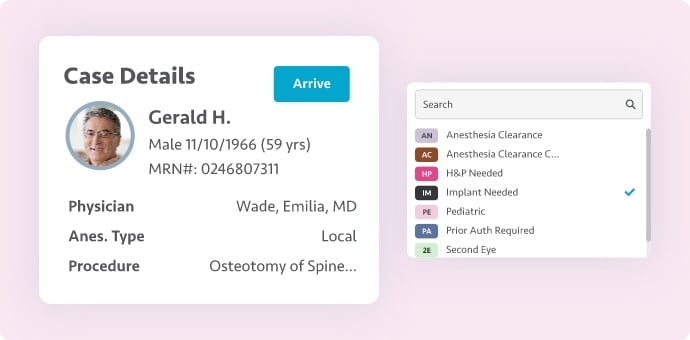
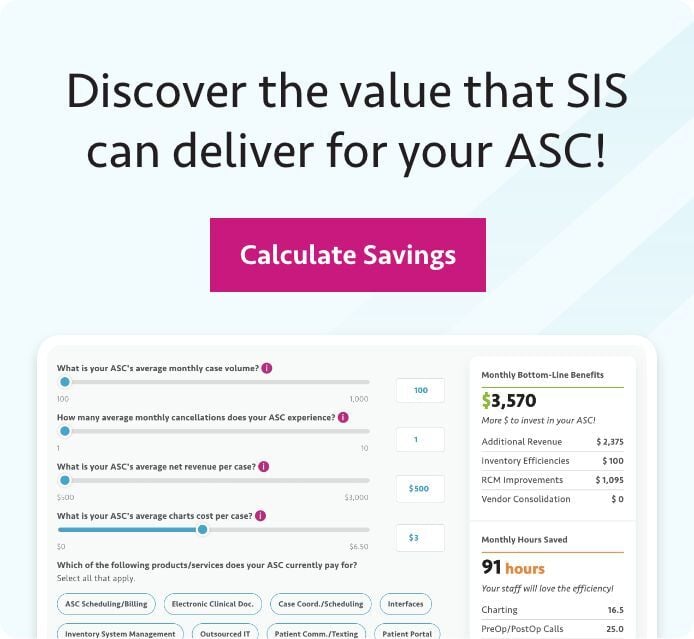












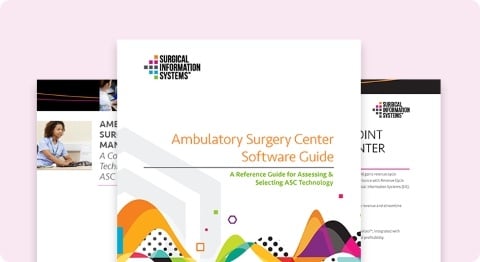
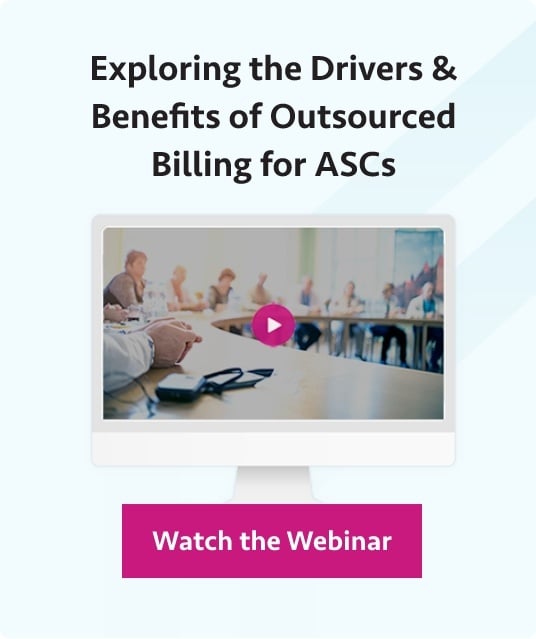




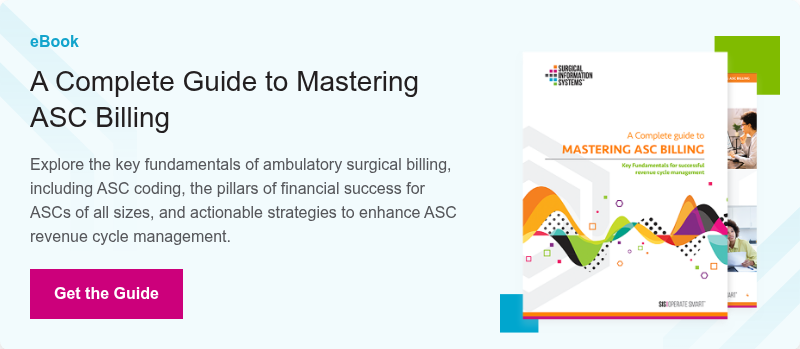


.png?resize&width=300&name=CMS%20Final%20Rule%202026%20-%20Blog%20Image%20(1).png)
